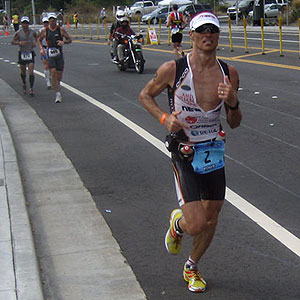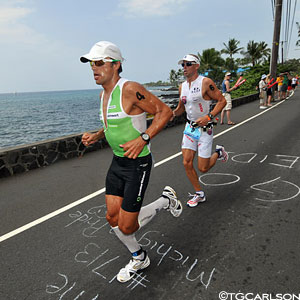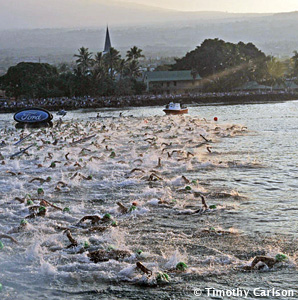Ironman’s proposed architecture

Ironman has clearly been frustrated by the lack of quality athletes toeing the starting lines of many of its events. The new proposed framework attempts to address this.
The framework can fix several problems. Calibrating races according to their de facto importance just makes sense. Pros, like AGers, vote with their feet. If, year after year, a strong starting field defies generation even though a $50,000 purse is offered, isn't it rational to give that purse a haircut, bestowing a historically well-attended race with the largesse it deserves?
But WTC must guard against abuse of the process. These $75,000 purses should go to the better, and better attended, events. WTC shouldn't try to engineer good fields, rather to reward historically good fields. This process of athlete input should include asking the athletes what races should be awarded the higher prize purses, rather than larger purses being used to bolster an otherwise underperforming race, or to honor a financial deal cut with a city or convention authority.
We also feel WTC's pain on the issue of qualification. Should a pro make the starting line at Kona through the accident of a cherry pick? No. if WTC is going to pare the field from 180 pro athletes to 80—which it intends to do and will do irrespective of what the pros think (count on this)—then WTC is right: It needs the world's best 80 pros, and a qualification process makes sense. This, if executed against the backdrop of fairness and egalitarianism.
SERIES QUALIFYING
This is an artful and shrewd idea. Its result, by design—or at least by effect—sucks up all the energy and oxygen available to all athletes seeking to qualify for Kona and Clearwater championships. Through creating a yearlong points competition culminating in a dead sprint ending on the first of September, few but the very best athletes can spare the time to race in a Challenge, an Abu Dhabi (IMG) or Rev3tri event.
This is high risk for Ironman. Starting 15 years ago Euro pros increasingly decided against racing Kona, even if they qualified for it, because the prize money was so low; if an athlete didn't finish 3rd, he couldn't pay for this travel expenses to Kona. That trend hasn't abated. A process designed to keep athletes from racing events other than WTC events may well backfire, and marginalize the talent on Kona's starting line. WTC needs to take care not to overplay its hand.

WORLD CHAMPIONSHIP STATUS
Yes, the Hawaiian Ironman has been granted the legal right to be called a world championship. What's more important, however, is whether the world considers these races world championships. Up until this point, that race has have earned the right by virtue of the stature of its starting field.
Yes, you historically qualify for Kona through racing WTC-aligned events. But there's always been room in a professional's calendar to do a few no-WTC races. This new structure places that flexibility in peril: It actively works (whether or not this is the intent) to keep athletes from competing in other events altogether. This marginalizes WTC's claim that Kona is, in fact, a world championship. Rather, it renders it more like a series championship.
THE CALCULUS FOR WTC
This qualification stampede right up until the bare weeks before Kona is cynical and maybe even dangerous. Has the sport advanced enough to provide viable alternatives to Kona? If so—and we think it has—WTC is playing fast and loose with its brand, treating it in a cavalier way. Certainly, if our recommendations below are adopted, there may be fewer athletes racing its races in July and August, and more of its athletes able to compete in events owned by competing race producers. But if WTC keeps to this exclusive qualification method, it demonstrates a body language that says it's fearful of the event brands IMG and Rev3 are building.
RECENT HISTORY
Let us remember that WTC has made judgment errors in its policy several times over the past year—all policies from which it's had to step back: the 8 percent rule; compression wear; enacting rules prior to USAT dispensations. These were small, tactical errors that did little to damage WTC's brand. But these changes contemplated here are in a different category. How they are implemented, and executed, could bring the world's great triathlon brand down to the level of the others in its competitive set.
Or, its new policy can raise the Ironman brand to further heights, depending on the care it takes in formulating these changes.

EXECUTION
Our recommendation is for Ironman to resist trying to wring every tactical advantage out the construction of this qualifying and prize money framework. WTC has already gotten from the pros a gift of several hundred thousand dollars per year (maybe more) through giving up 100 slots on the Kona pier. Those 100 slots largely "fund" St. George and The Woodlands with AG slots that give these races legitimacy. This legitimacy allows WTC to earn all the revenue that these two races provide it. In return, WTC should honor the sacrifice its imposing on its pros, and, we think its proposed scheme can do that. But it needs to hold true to certain principles. This new framework should increase the worldwide prize purse, not simply in the aggregate, but in the average purse paid out per race or, at least, per important race; it should grant Kona its best possible starting field; it should honor races that deserve money with money.
Our recommended structural enhancements to the framework are two:
1) Establish a point threshold that guarantees Kona and Clearwater entry. If WTC does its homework properly, perhaps 30 men and 20 women will hit that number prior to September 1, and will not be forced into the mad August points rush, the prospect of which demeans the very pros WTC wishes to have attend its events. These athletes can then make travel arrangements at greater leisure, and train for Kona in a way that honors that world championship with top performances by dozens of Kona's pros, rather than only by the top few.
What should this point total be? Look at the 15th through the 20th best men who competed in Kona last year, and the 10th through the 15th best women. What were the totals accrued, when the point system contemplated is applied to their performances during the season? The average point totals achieved by these high performing men and women would be threshold point totals for automatic Kona qualification status.
2) The time-honored tradition (going back to 1978) of allowing top Kona finishers an auto-requal to Kona is going to be scrapped, based on the published document. That's regrettable. But it's worse than that. According to the proposed framework, every other Ironman past September 1st—except Kona—fulfills the requirement of a completed Ironman in order to race Kona.
There is a middle ground. If WTC is going to scrap the auto-requal benefit to a top-10 Kona finish, then at least make a top-10 Kona finish count as the Ironman race the athlete needs to perform prior to the subsequent year's Kona race. Requiring an Ironman to be raced in addition to Kona—in order to be eligible for Kona—smacks of a desperate attempt to fill unattractive races through a coercive and anti-competitive process.
Ironman is a great brand, and it's been well-husbanded throughout its ownership, by Valerie Silk, by Dr. Gills, and now by Providence Equity Partners. But WTC's management team has exhibited a recent history of decisions from which it's had to embarrassingly crawl back. This, because it announced structural or rule changes without thinking them through; and by taking only its own counsel, rather than by first talking to stakeholders who might not have a corporate blind spot.
WTC's new architecture can be a big step forward. We applaud the thought; we applaud the effort; and we stand behind the theme. At the same time, WTC needs to remember that it routinely fails when it doesn't listen to its customers before making a myopic decision. So, we also applaud this period of input. But it needs to be more than perfunctory. It needs to be a true partnership with its customers and, for the purpose at hand, the customers are the pros who patronize and legitimize these world championship events.



